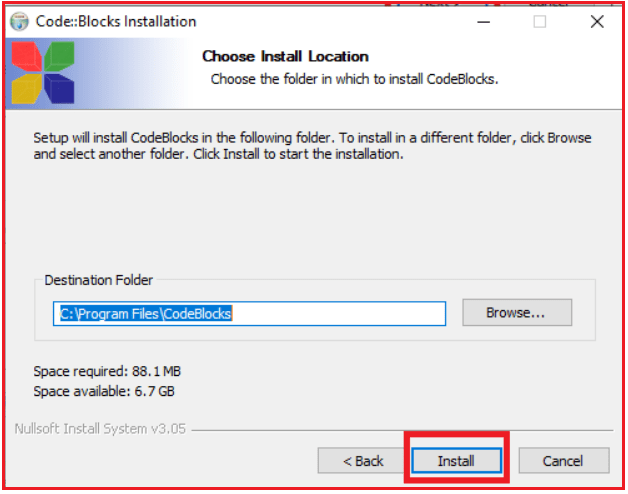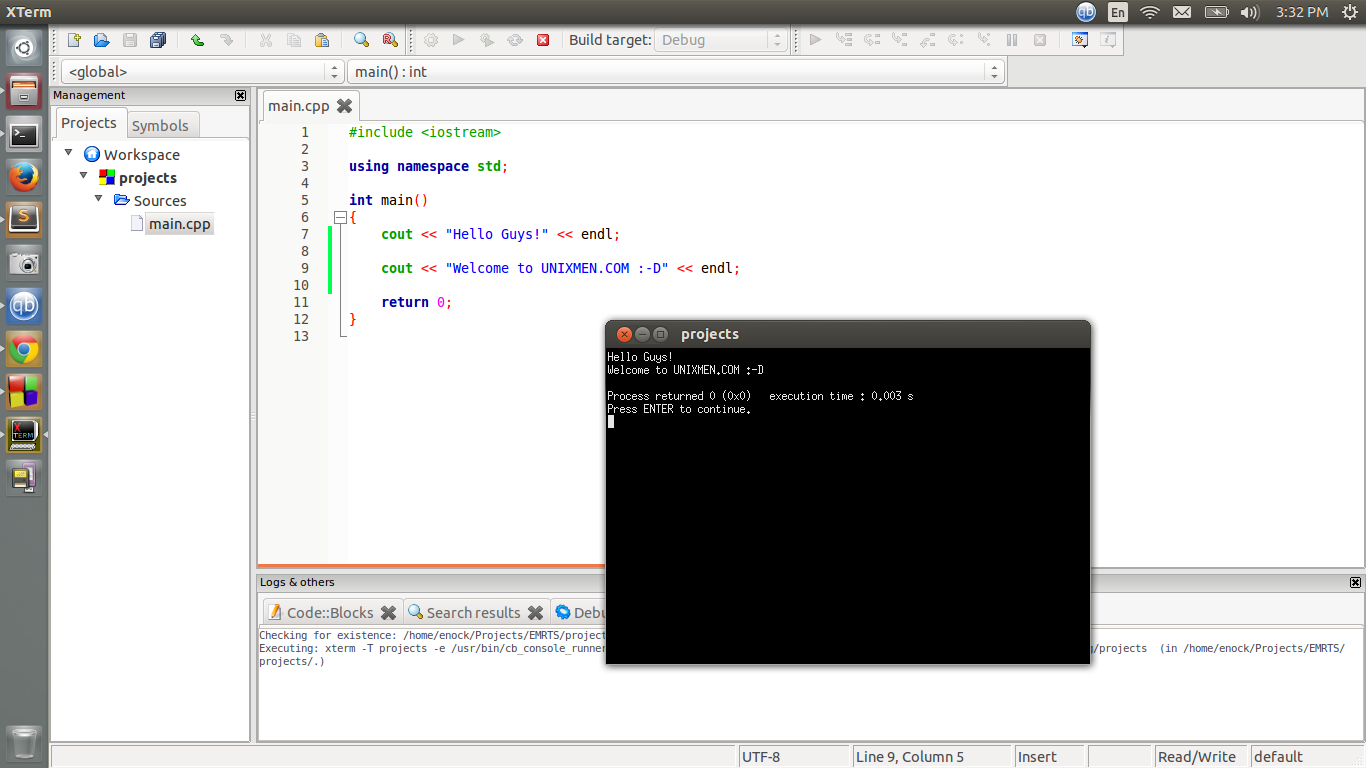

- #SETUP CODEBLOCKS COMPILER FOR FREE#
- #SETUP CODEBLOCKS COMPILER HOW TO#
- #SETUP CODEBLOCKS COMPILER INSTALL#
- #SETUP CODEBLOCKS COMPILER CODE#
- #SETUP CODEBLOCKS COMPILER WINDOWS#
Now, go create a directory wherever you like, for example D: \ projects \ CodeBlocks.
#SETUP CODEBLOCKS COMPILER INSTALL#
Download and install it, keeping all suggested settings.
#SETUP CODEBLOCKS COMPILER WINDOWS#
A nice, easy client for Windows is, which is freely available. So, we need a client to access their svn repository of sources. The CodeBlocks developers provide their sources through the version control system. In order to be able to retrieve the latest and greatest CodeBlocks sources, we need to install a Version Control System. It should discover the MinGW compiler we just installed. So, it’s important to make sure the bin directory of your MinGW installation is in your path variable.įinally, start up this new nightly build of CodeBlocks. It’s in the bin directory of our MinGW installation. Just unzip it into the same directory that you unpacked the CodeBlocks nightly build. You can also download it at the nightly builds forum. Now, CodeBlocks needs one more dll to work correctly: the WxWidgets dll.
#SETUP CODEBLOCKS COMPILER FOR FREE#
If you don’t have 7-zip, you can download it for free from. Next, unpack the 7-zip file to any directory you like. The nightly builds are unicode versions, containing the core and contributed plug-ins. All we need to do is get hold of a pre-built version CodeBlocks.įirst, download a nightly build. If you load this project file in CodeBlocks then you are able to build CodeBlocks from sources. Set path=%PATH% C:\MinGW\bin C:\MinGW\mingw32\bin įor a project description CodeBlocks.cbp is available. An easy way to do this is with the following command at the command prompt: You may need to add the bin directory of your MinGW installation to your path. CodeBlocks just brings it along in the official versions so that the average user does not need to bother with this process. A compiler does not belong under the directory tree of an IDE they are two separate things. If you already have an installation of CodeBlocks that came bundled with MinGW, I still advise you to install MinGW as described here. The remainder of this article will assume that this is where you have put it. I would suggest extracting (and installing for the GDB) everything in the C: \ MinGW directory. We will stick to version 3.4.5, which works nicely.įirst, a brief explanation of MinGW components: gcc-core the core of the GCC suite gcc-g++ the c++ compiler mingw Runtime implementation of the run time libraries mingw utils several utilities (implementation of smaller programs that GCC itself uses) win32Api the APIs for creating Windows programs binutils several utilities used in build environments make the Gnu make program, so you can build from make files GDB the Gnu debugger This is the compiler distributed with CodeBlocks when you download the official package. Since the CodeBlocks developers build CodeBlocks using GCC, we might as well use that one under windows.

Let’s create an ingredient list for our cooking experiments In order to perform our build tasks, we will need several tools. It is described as a sequence of actions. This article will describe the process used in creating the nightly builds, and can be used as a guideline if you want to build CodeBlocks yourself.

#SETUP CODEBLOCKS COMPILER HOW TO#
How to Install SFML in Code::Blocks for WindowsĬompiler menu to open the Compiler settings dialog.4.1.12 Building CodeBlocks 4.1.
#SETUP CODEBLOCKS COMPILER CODE#
View the source code for the default SFML project file by expanding the Sources tree and clicking on main.cpp.Build the project by clicking on the Build icon in the toolbar, using the menus Build->Build, or pressing Ctrl+F9.


 0 kommentar(er)
0 kommentar(er)
